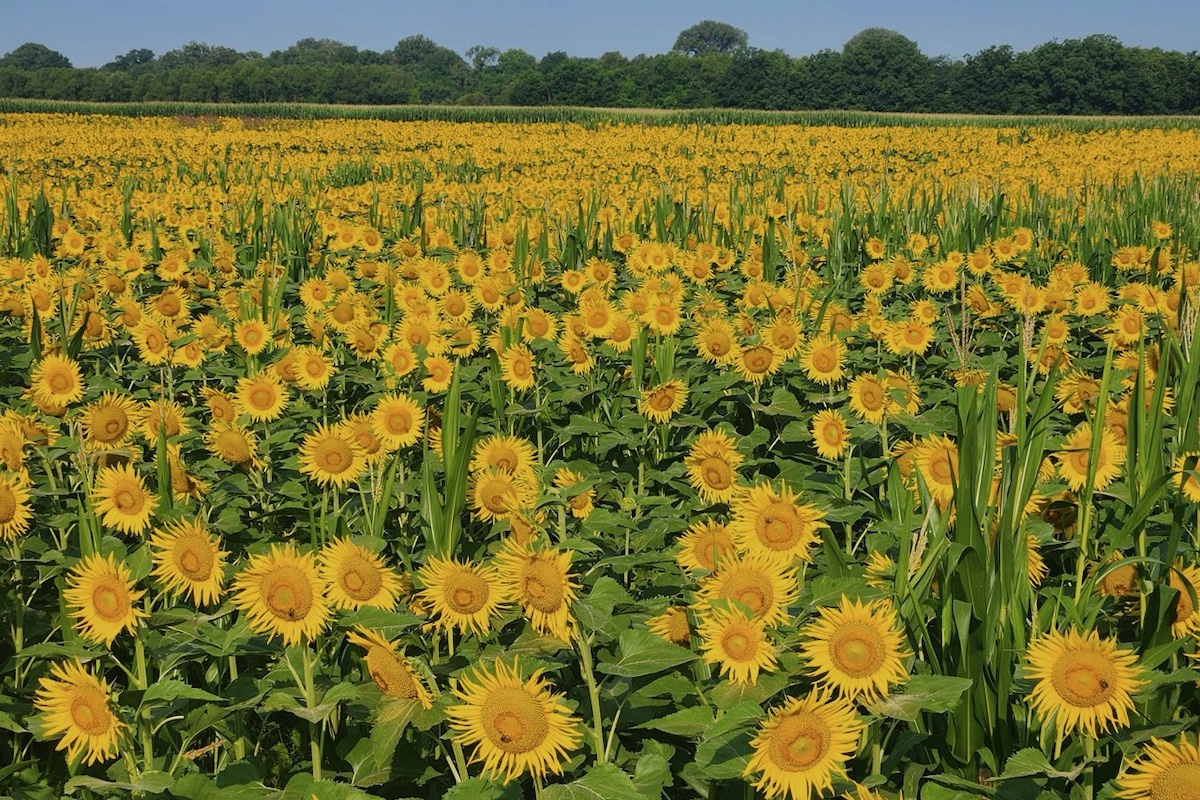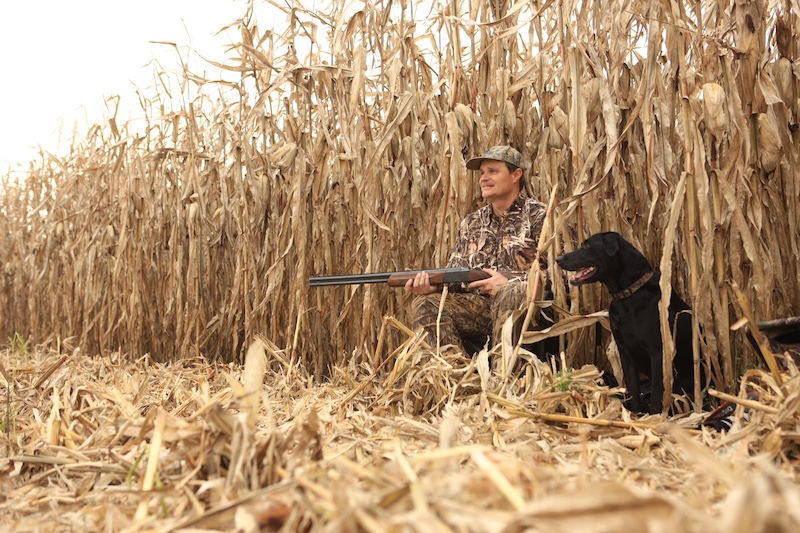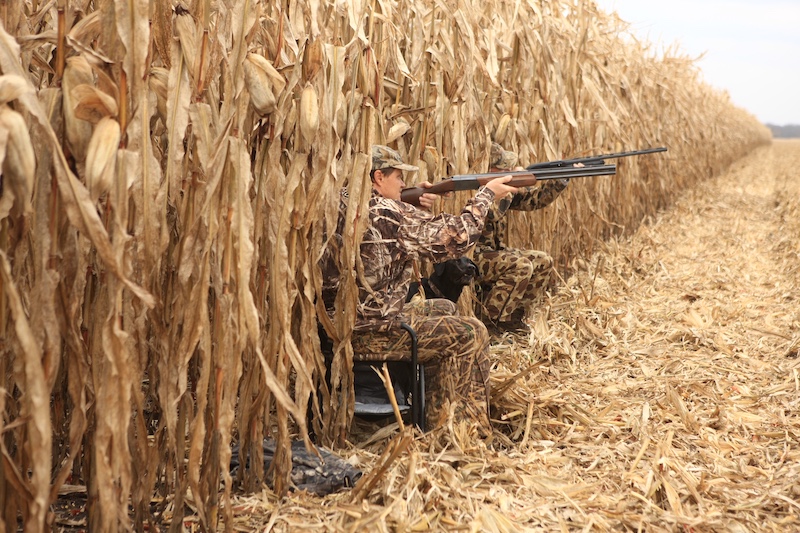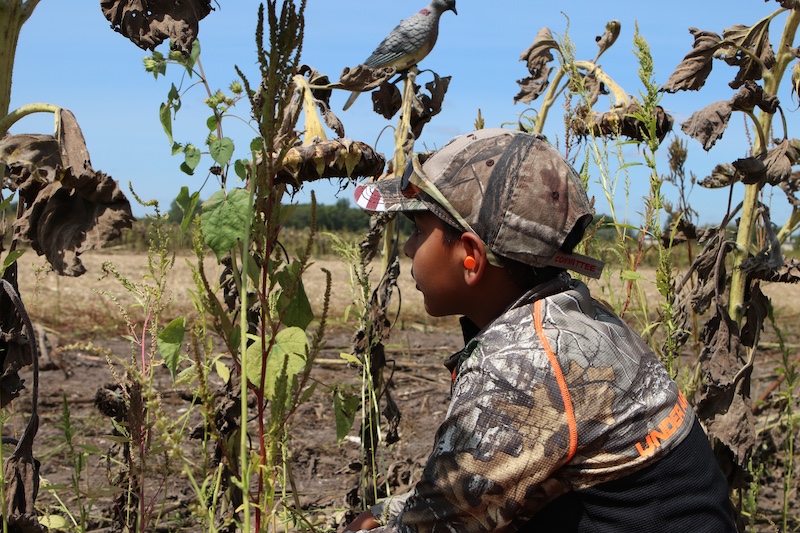
Photo by Kenneth Delahunt.



Photo by Kenneth Delahunt.
Consider this your warning: dove season starts September 1, so if you haven’t had a chance to dust off the shotgun and swing on some clay targets, time is wasting. These aerial acrobats are a tough test for even the most accomplished wingshooter, so do yourself a favor and get some practice in while there’s still time.

Many hunters mark the September 1 dove opener as the start of the fall hunting season (in my humble opinion, too few take advantage of the true opener, to pursue bushy-tails throughout August). Group hunting for doves is a common occurrence and for many it is a social event to be celebrated with family and friends. Public Service Announcement: Do yourself and your fellow hunters a favor and refrain from enjoying any adult beverages until after the hunt is over. Pairing the group atmosphere with the warm seasonal temperatures and the fact that one does not need to be overly quiet to successfully harvest birds, this setting provides an excellent opportunity to get youth and new hunters involved in the sport. Whether they’re observing and participating as two-legged retrievers or they’re in search of their first bird, there are ample opportunities to introduce others to our beloved community of outdoorsmen and women, through dove hunting.
Illinois follows a split season for dove, with the first split running from September 1 through November 14 and the second split running from December 26 through January 9. The daily bag limit remains at 15 birds, with a possession limit following the third day of the season, at 45 birds. Hunters can pursue doves from sunrise to sunset, and all hunters must possess a combination of a hunting license, habitat stamp and Harvest Information Program (HIP) certification (federal requirement when hunting migratory birds).

HIP data is important for tracking harvest estimates, which feeds into population models, so accurate data is needed. If you happen to purchase your hunting license from a third-party vendor while also requesting your HIP certification and they don’t ask you questions about your pursuit and harvest of migratory species last season before issuing you a certification, please feel free to inform them that they’ve done conservation a disservice by skipping a requirement that takes all but a minute of extra time to complete. Also, if you utilize the online license system for your certification, make sure to answer the questions fully and to the best of your memory. Whole, accurate data matters.
There are two species of native dove that can be harvested towards your daily bag limit—mourning dove and white-winged dove. In Illinois, white-winged doves are extremely rare as their home range is typically limited to Mexico and the southern tier of U.S. states. If you happen to harvest one, consider yourself lucky, as you bagged a stray bird that ventured a bit farther north than usual.

While in the field, hunters may also harvest three non-native bird species that don’t count against their daily bag limit—pigeon (rock dove), Eurasian collared dove and ringed turtle dove. By rule, once a hunter has reached their daily bag limit of mourning and white-winged doves, they may not remain in the field in pursuit of the non-native birds listed. The purpose of this regulation is to prevent undue stress by removing hunters from the field, giving the native doves the ability to feed and roost, unharassed. Heavy hunting pressure has been shown to reduce doves’ use of an area (Russell 1954, Lusk 1997), so any opportunity to provide doves with a reprieve should be beneficial to keeping more birds in an area for future hunting opportunities.
To learn more about the doves found in Illinois, check out the OutdoorIllinois Journal article Do You Know Your Doves?
Prior to embarking on your hunt, review the Illinois Digest of Hunting and Trapping Regulations publication. Review the sections that pertain to dove hunting within the Upland and Small Game section and the legal requirements that must be met prior to hunting. Also, if interested in hunting opportunities on state sites, review the hunting site information pages at Hunt Illinois for site-specific regulations. Some sites may vary from the statewide regulations listed above, while other sites may not be open to dove hunting.

This is also a great time of the year to scout potential hunting locations and to make final preparations to food plots for your upcoming hunt. Doves are migratory generalists, meaning they utilize an array of habitats while being highly mobile, enabling them to move to where resources are abundant. Doves feed almost exclusively on seeds and they are attracted to areas with lots of disturbance and high volumes of seed, whether produced by native plants or agricultural crops. Highly disturbed areas (cattle pastures, high traffic utility corridors and ag field edges to name a few) attract dove, as these areas typically produce high seed-yielding, annual weeds and provide ample bare ground for foraging and access to grit.
Some of my best dove hunts have been in cattle pastures, and I hold a preference for them. As a youth, I had access to a neighbor’s overgrazed pasture, where I would nestle into a fencerow for cover, with standing dead trees towering above me. Doves would typically cross this area as they transitioned from field and pasture feeding, to roosting cover located along a ditch line in the center of the pasture. Many evenings, after hopping off the bus following school, I would hurry to this location where I consistently experienced a slow but steady flight of birds during the last few hours of the day, with a rush of activity during the last half hour of legal shooting light. These hunts lasted well into the month of October. Yes, doves can be found after the opening few days of the season.
I also found similar success with this strategy while living and hunting in Texas and Colorado. Across much of Texas, long considered the U.S. flagship destination for dove hunters, grain crops and food plots aren’t prevalent and most hunters pursue birds on rangeland. Doves are highly successful at making a living off the seed produced by annual weeds, such as ragweed, barnyard grass and annual sunflowers, in livestock pastures. I highly recommend that you scout for a similar set-up here in Illinois.

For most dove hunters though, sunflower fields are their preferred hunting destination, but quality hunting can also be found where grain crops, such as corn cut for silage, wheat, sorghum, millet, are present. Planting and manipulating food plots consisting of wheat, millet or sunflowers is a popular practice that can produce great hunting opportunities. The drawback is that the process can be expensive and time consuming. For sunflowers, if you miss the window for your herbicide application or fail to apply fertilizer, you may miss out on a quality dove field in September. Also, with any given crop, if the plot wasn’t planted early enough for seed to reach maturity prior to September 1, the birds will look elsewhere to feed.
For those fortunate enough to have such a food plot in place, your crop has been planted and growing for the past several months and the seed is now close to maturity. Now is the time to start preparing the plot for hunting season. A combination of natural agriculture practices (harvest, mowing, disking, herbicide application, prescribed fire and crimping) can be used to prep the plot. One of the most important but often overlooked factors is that all herbaceous vegetation should be removed or cut down to chaff, leaving seed and lots of bare ground. If you leave tall stubble, or if there is a mat of plant material covering the seed and soil, the attraction level for doves drops significantly. To maximize the number of birds that you attract and hold in the area, as soon as the crop begins to reach maturity in early August, manage a strip of the plot each week to make more seed available for doves. This will ensure ample birds are present on opening day.

Also, NO, supplemental seeding a crop of grain or sunflowers in August, through a broadcast application for example, is not a natural agriculture practice—that’s baiting my friends. Any activity where you’re artificially applying an attractant that either didn’t naturally grow/exist or that wasn’t grown as a crop or a food plot on the acres being hunted, is baiting. NOTE, since they’re migratory birds, baiting of doves is a federal offense and typically comes with steeper penalties. There isn’t a dove hunt that’s worth sacrificing your hunter ethics or a chunk of your paycheck. If you have questions about your process and whether something could be construed as bating, my advice is to visit with your local conservation police officer (CPO). They’re the people most likely to check you in the field. Getting their guidance ahead of time will help you avoid a future citation.

Have a safe and enjoyable hunting season!
Resources
Lusk, J. 1997. Hunting regime effects on mourning dove vigilance, foraging behavior and hunting site use. Thesis, Southern Illinois University, Carbondale, USA.
Russell, D. M. 1954. Kentucky mourning dove study. Kentucky Department of Fish Wildlife Resources, Frankfort, USA.
Don Kahl is the Agricultural and Grassland Wildlife Program Manager for the Illinois Department of Natural Resources’ Division of Wildlife Resources.
Prześlij pytanie do autora